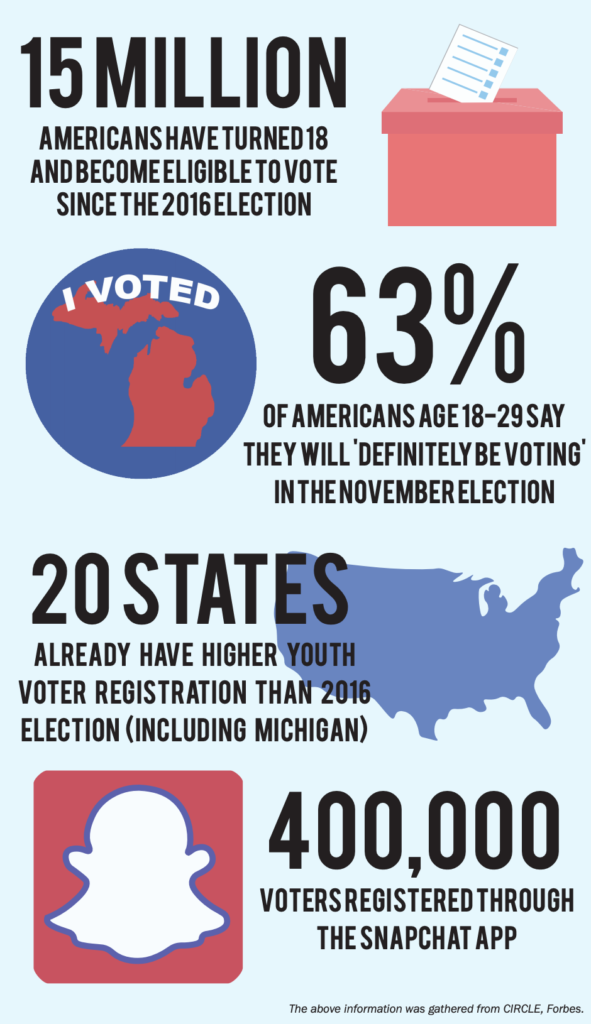
The 2020 general election is expected to have the largest youth voter turnout in decades. Some are crediting this influx in participation to social media and its massive influence.
With both candidates having a large social media presence, Joseph Biden has a combined 20 million followers and incumbent Donald Trump boasts a massive 140 million combined followers, they both have significant reach. But followers aren’t the only thing that matters.
How the candidates use their platform matters just as much, and a lot of young voters find some of their behavior off-putting.
“They are using twitter for their little wars, and it honestly looks immature for 70-something year old’s,” nuclear medical technology sophomore Brynn Krzyminski said. “They should be using their large platforms to inform instead of to cut down.”
They are also advertising on social media to rather poor reception. Comment sections on these ads, if they haven’t been disabled, are usually filled with support for the other candidate and snide remarks.
Candidates aren’t the only ones that have this social media impact. A lot of teens are using their voices on the social media platform TikTok. With the hashtags “Biden2020” and “Trump2020” amassing a total of 15 billion views there is no shortage of content to watch on either side.
“This has got to be one of the most politically informed generations ever, you can’t take a scroll through your For You Page without seeing something about politics. This generation went from eating Tide Pods to being political activists in like 3 years, it’s mind-blowing,” social work sophomore Olivia Begin said.
Another way youth have been getting involved is by creating group accounts with other users who share their political views. An example of this is @TheDemHypeHouse and @TheRepublicanHypeHouse on TikTok. These accounts have both amassed hundreds of thousands of followers and work to dispel misinformation and stereotypes attributed to their respective parties.
Youtuber and TikToker David Dobrik teamed up with HeadCount, and gave out five Tesla vehicles to registered voters. This sparked over one-hundred thousand people to confirm their registration or become registered voters, one of the biggest voter register events in history.
Many social media platforms, such as Facebook, Instagram and Snapchat launched advertising efforts to get younger people to vote this year. According to Forbes, Snapchat announced that it had registered 400,000 voters.
It’s also good to keep in mind that while social media can be a very helpful, informative tool, that it can do just as much harm.
“I spend an absurd amount of time wading through memes and troll posts to find actual information. For instance, I didn’t even know the debates were happening until each of them had already passed,” Krzyminski said.
Both those interviewed shared a common sentiment, ‘make sure you check the information you see on social media because everything you see is not always accurate’.“
If you haven’t already, go to your local clerks office to register and vote anytime before Nov. 3.
